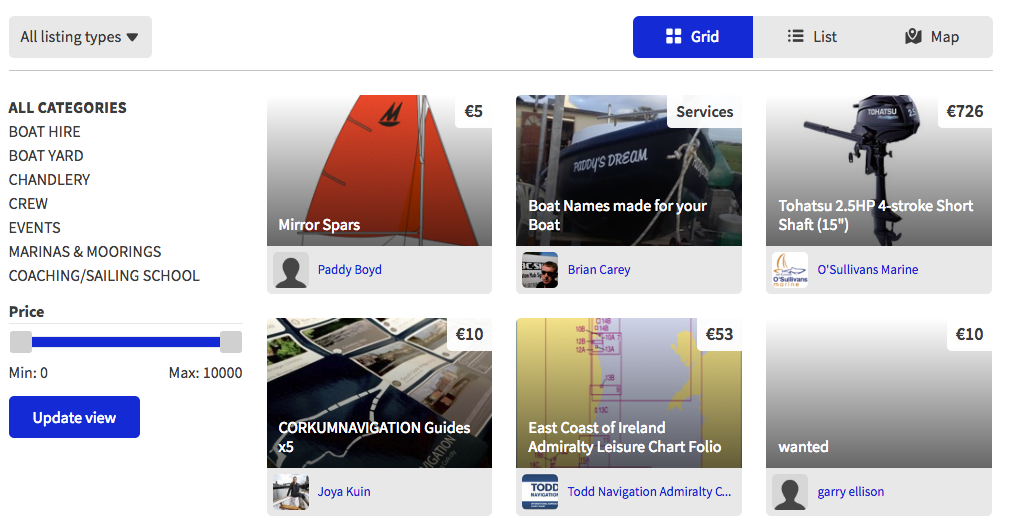Displaying items by tag: Equipment
What's New on Afloat's Marine Marketplace?
A new Tohatsu outboard engine (2.5HP 4-stroke Short Shaft (15") at €726, Mirror dinghy spars for a fiver, a maritime painting of the ARC fleet at €200 by artist Pete Hogan are just a few of the offers currently on Afloat's Marine market.
You can also find a range of charts and cruising guides from Todd Navigation in Belfast, bilge pumps and anchors from O'Sullivan's Marine in County Kerry plus Rick Tomlinson's sailing calendars and a lot more besides. Seller Gary Elisson wants a project boat to do up as a live aboard. 'It must be cheap', he says. Waterford seller Niall Power has a carbon fibre spinnaker pole (3.5 Mtr long) for sale at €700.
Recent section updates now include space for boatyard services such as engine repairs, marina berths, boat hire, sailing school courses, crew and much more.
Check out the latest items here and list your own items, services and events in Ireland's dedicated maritime marketplace.
The idea behind the platform is to give focus to the Irish marine market through a definitive portal.
 Some of the latest items on Ireland's marine marketplace. Click for more.
Some of the latest items on Ireland's marine marketplace. Click for more.
Marine Notice: Hydrographic Survey in Irish Sea
#MARINE WARNING - The latest Marine Notice from the DTTAS advises all seafarers in the Irish Sea between north Dublin and north Wales to give a wide berth to the hydrographic and oceanographic survey operation in the area this week.
The SV Bibby Tethra (callsign 2EGF8) commenced survey operations yesterday (Monday 16 January) from offshore at North Beach in Rush to approximately 16 miles offshore north of Anglesey. The survey is scheduled for seven days, subject to weather delays.
The vessel will operate on a 24-hour basis, displaying appropriate day shapes and lights during survey operations, and will transmit an AIS signal. The vessel will be keeping a listening watch on VHF Channel 16 at all times during the operations.
Survey operations will involve towing survey equipment up to 100m astern of the vessel along pre-defined survey lines, which will restrict the vessel’s ability to manoeuvre.
Details of the survey area are included in a PDF of Marine Notice No 2 of 2012, which is available to read or download HERE.
Carlow CAC Receives Bursary for Disabled Angling Efforts
#ANGLING - Carlow Coarse Angling Club chair Gerry McStraw was presented last week with a special bursary by Carlow Sports Partnership for the club's efforts in helping disabled anglers to participate in the sport.
According to the Enniscorthy Guardian, McStraw was joined by Carlow CAC PR officer Ian Warburton and treasurer George Quinlan in receiving the money from Carlow Sports Partnership chair Tracey Byrne and Carlow County Council's Thomas Kinsella.
McStraw was recently highlighted on Afloat.ie for his spearheading of the revival of coarse fishing in Ireland.
The bursary will be used to buy equipment essential to running more coarse angling programmes in 2012.
Carlow CAC will also host three of the six weekends for the National Coarse Fishing Federation of Ireland's qualifiers next spring and summer.


























































